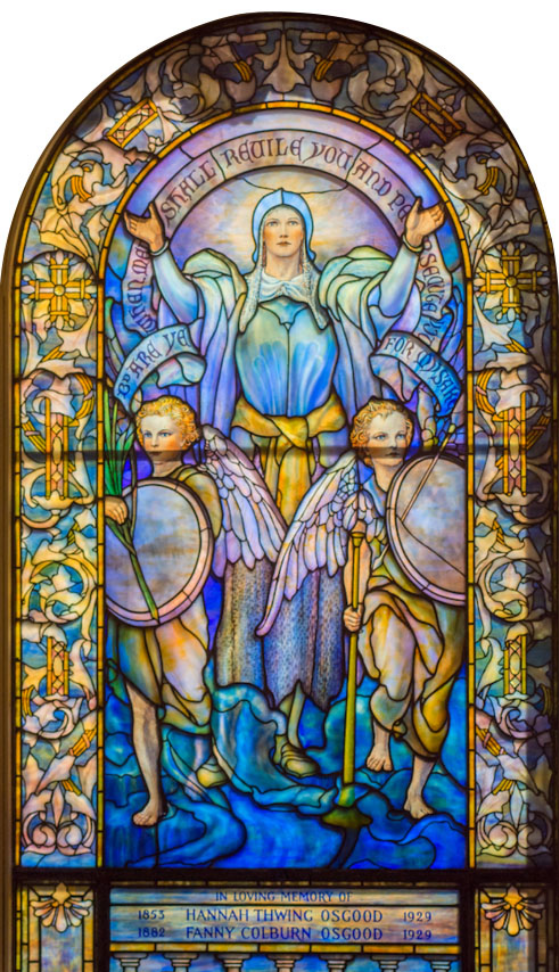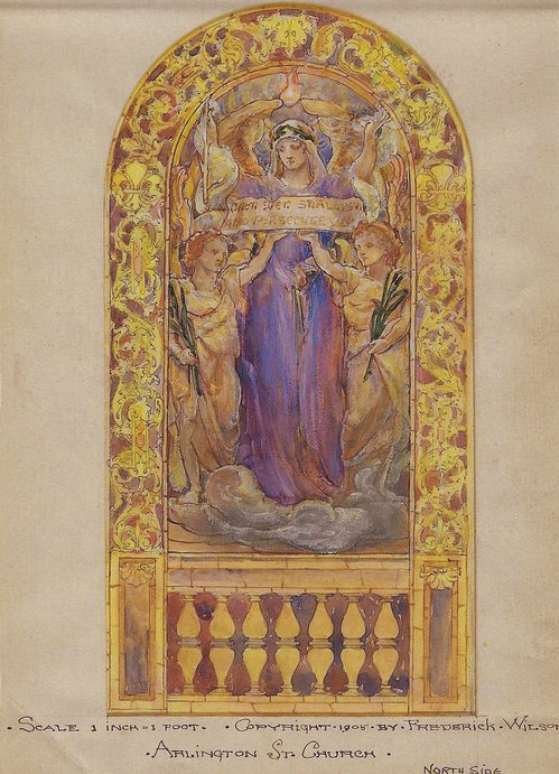Blessed Are Ye When Men Shall Revile You and Persecute You
Installed: 1930
Memorial name: Osgood Memorial Window
Dedicated to: Hannah Thwing Draper Osgood (1853-1929) and Fanny Colburn Osgood (1882-1929)
Donor: Hannah Draper Osgood Townsend (daughter and twin sister)
Location: Left balcony
This was the last window installed at Arlington Street Church. It was glazed a quarter century after Frederick Wilson created the original designs for the series. It is not known who supervised its production since both Tiffany and Wilson had left Tiffany Studios by 1930. With its brighter tone and lack of hand-faceted jewels and drapery glass, this window is distinct from the rest of the beatitudes series. Another key difference is the lack of wings on the angel. She is clad in silver armor with a chainmail skirt, rendered by painting the pattern directly on the glass and covering it with an additional plain glass sheet. In contrast to Wilson’s original figures who hold emblems of peace, these cherubs carry shields. The figure on the left also holds a palm branch, emblematic of victory, while the other grasps a golden spear. It appears that the tone of the original sketch was modified to reflect a more aggressive approach to battling unjust persecution.
This window honors a mother and daughter who died just months apart in 1929. Fanny C. Osgood (1882-1929) was a champion golfer and a pivotal figure in shaping the sport of women’s golf in the United States. She was also active in politics and honored by the League of Women Voters for her outstanding contributions to the cause of women’s suffrage. Her mother was Hannah Thwing Draper Osgood (1853-1929), the widow of Boston publisher, banker, and manufacturer, Edward L. Osgood and the sister of Gov. Eben S. Draper and General William Draper. The window was donated by Hannah Draper Osgood Townshend (1882-1944) in memory of her mother and her twin sister.

Glenn Kulbako Photography

Frederick Wilson’s 1905 Gouache from The Metropolitan Museum of Art Collection
